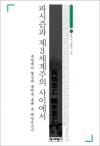
Fujii Takeshi 후지이 다케시
Seoul: Yŏksa Pip’yŏngsa 역사비평사, 2012
Reviewed by Seokwon Kim (Yonsei University; Visiting Fellow, Harvard-Yenching Institute)
Fujii Takeshi, a Japanese historian and political commentator, is actively engaged in many controversies over contemporary Korean history in the Republic of Korea. This pioneering book, which is based on the author’s doctoral dissertation, makes at least three original contributions. First, Fujii takes seriously ‘fascism’ as an ideology, a regime type, and a social movement in 20th century world history and as an unavoidable subject of Korean history. Apart from simple analogies and polemical discourse, there have been few serious academic attempts to relate fascism, once “seen as a ray of hope” (François Furet) and at least since 1945 perceived as a symbol of political evil, to the tumultuous contemporary history of Korea. The author thus reintroduces a significant historical context into Korean historiography. Second, the book greatly advances our understanding of Chokch’ŏnggye, the Korean National Youth Corps (KNYC) faction, which was an important political element in the early years of the Republic of Korea. Third, Fujii’s study reveals the crucial link between ideas and politics. If one is interested in the history of the 20th century, the “age of ideology” (Karl D. Bracher), this book is a good entry point, because it successfully combines intellectual and political history.
By raising the fundamental question “what is the nature of the Republic of Korea,” (15) the author provocatively revisits the conventional answer: a “pro-American, anti-communist” state. While mainstream historians criticize this nature of the Republic of Korea, ‘New Right’ historians try to justify it. Fujii’s approach moves beyond this polarized confrontation. By focusing on the thought and political activities of the KNYC faction, represented by people like Lee Bum-suk, An Ho-sang and Yang Woo-jung, the author discovers an “anti-communist, but not pro-American” (18) phenomenon at the foundation of the Republic of Korea. The book not only dismantles the old framework. Readers also encounter many almost-forgotten, but essential historical detail, which could be a sound stepping-stone for further research: the connection between the KNYC and Chiang Kai-shek’s Kuomintang, the intellectual trajectories of Lee, An, and Yang, the overlapping constituencies of the KNYC and Cho Bong-am’s group, as well as the crucial role of the KNYC in many political incidents of that period, for example the Pusan Political Crisis of 1952.
The book also has its limitations. Naturally, as “a byproduct of the present age” (5) it is not immune from ideological biases. Fujii adopts certain stereotypes about fascism and the Cold War. He sees fascism as an instrument to overcome the “crisis of capitalism,” while neglecting fascism’s troubled relationship with capitalism, fascism’s sheer hostility to liberal society, and fascism’s ‘hostile complicity’ with communism. Fujii’s perception of fascism maintains certain repudiated Marxist viewpoints. As for the Cold War, the simple equation “anti-communism = pro-American” might be a reflection of a binary Cold War mindset, but it is a strawman, since the Cold War has long been conceptualized in broader terms by thinkers such like Raymond Aron, as a continuation of ideological warfare between totalitarianism and liberal democracy in the 20th century. Second, Fujii goes a bit far when calling the assertion that the Republic of Korea was founded as a “liberal democracy and free market economy” a “lie.” (5) Simply put, mainstream Korean nationalists were not fascists. Some strong nationalists also cannot be called illiberal nationalists simply because they engaged in a big project of independent nation-building, which was naturally susceptible to statist tendencies. Despite their shallow understanding and practice of liberal democracy, their overall orientation was, broadly speaking, liberal. The author himself acknowledges that the KNYC faction was not the “intellectual mainstream,” (32) reflected in its decline around 1953. Last, investigating the relationship of fascism to Korean history, one cannot ignore North Korea, which became a hybrid between Stalinism and fascism during the Cold War. It fits Cold War patterns of several states of ‘3rd World-ism,’ ‘Anti-imperialist solidarity,’ and the ‘non-capitalist path.’ Especially, similarities with the Ceaușescu regime of Romania, explored by scholars such as Vladminir Tismaneanu, are noticeable. In the author’s words it may be “a hackneyed warning” (466) to worry about intermittent pathologies in a free society as a revival of fascism. But ignoring more manifest totalitarian hybrids between Stalinism and fascism, such as North Korea, is a grave mistake. Despite these limitations, this book represents cutting-edge Korean scholarship in the field of contemporary history. I strongly recommend this outstanding scholarly work for its successful combination of pioneering concepts and solid empirical research.
